Let’s talk...
About Friendship: We can ask our child: What does the word friend mean? How do we become friends? Who is your friend? And why are you friends? What do you like to do with them? What are the things you are similar in, and what are the things you differ in? What distinguishes your friend? And what is the thing you love most about your friendship?
We can also share with our children and tell them about our experiences with childhood friends.
Let’s enrich our Language...
We follow the movement of the yellow and blue spots in the drawings: When do they get closer? When do they move away? When do they blend? When do they grow and when do they shrink? We ask our child for their opinion on this.
We pay attention to the opposites in the story’s vocabulary.
Let's communicate...
We can invite our friends for a nice visit to our home and spend an enjoyable time together.
Let’s create...
The artists used the printing technique. We can dip half a potato, or a flat eraser, or a piece of sponge in “gouache” paint and make a stamp. We can print shapes of different colours on paper, and we may complete their small details with the help of a pen.
Let's talk...
About birthdays: What makes our birthday a special day? What celebrations do we desire? What activities and events do we want? What gifts have we received or wish to receive?
About love and care: How do we feel when everyone collaborates to make us happy? How do we feel when we care for others and prepare surprises for them? We can recall enjoyable moments when our loved ones surprised us and we can discuss different ways to express love. We may agree on a daily or weekly activity to add a special touch to our lives, such as preparing a meal together, reading stories, playing together, and visiting grandparents. What else can we do?
About collaboration: The family members collaborate and share tasks, making their child’s day joyful. We can think about the roles each of us can take to help and make others happy.
Let’s enrich our Language...
We read the story and explain the meanings of new vocabulary. We can pause at scenes and describe the drawings.
Creating a card for our family: We can add our names and a picture that brings us together, or some words of thanks and love. We can color and decorate it, then hang it in a special place in our home.
Let’s sing...
We can learn poems and songs about birthdays, love, and family. We can repeat them and perform suitable movements alongside it.
Let’s create...
We can prepare a surprise for one of the family members. What can we choose? We can think about what they like or need, tailoring the surprise to them. We may agree to make every weekend a special day for one family member.
Let’s play...
What if we exchanged roles for a day in our home? Who would be the father/mother/child? We can have fun thinking about others, describing their feelings, and expressing them.
Let’s talk...
About desires: The little owl understands what he likes, such as sledding, eating ice cream, and adding numbers. We can talk to our child about the things they like and want to do.
About expressing feelings: The little owl tried various ways to get rid of the scarf. We can ask our child why he did that and suggest alternative ways to express dissatisfaction or displeasure to parents.
About participating in decision-making and choices: The owl mother decided to involve her child in choosing the scarf he wants. We can talk to our children about situations where they participate in decision-making, such as choosing clothes, toys, household chores, and situations where they don’t participate in making choices. Ask them: How do you feel? How would you like us to act?
Let’s communicate...
We can spend some quality time with our child on a nature walk or a trip to a nature reserve, like Al Hula Reserve, where we can learn about different bird species, especially during their migration season.- The owl mother knitted the scarf for her child. We can enjoy preparing a product with our child, like making an owl doll from old clothes.
Let’s enrich our language...
The little owl accurately expressed his dislike for the scarf using appropriate adjectives. We can play a guessing game with our children, saying, for example, “I see something tall, green in color…” and let the child guess. We ensure the use of precise qualities for the item or thing that our child will understand.
Let’s act out and create...
Let’s talk to our child about situations where they feel frustration or anger. The scenario helps us think together about ways to alleviate their feelings and use appropriate social expressions.
Let’s Talk
- About the sense of capability as children mimic the movements of various animals. We can talk to our child about tasks they can now accomplish that they couldn’t before. We can also boost their sense of capability by saying, “Yes, you can!”
- About Play: The book is interactive and encourages movement and play. We can talk with our child about the games they enjoy and introduce them to games we used to enjoy in our childhood.
Let’s Enrich our Language
The book is rich with action verbs and body part names like arms, legs, feet, neck, etc. We can facilitate their use in our daily lives to describe body parts and movements, encouraging the child to describe their actions.
Let’s Explore
We can explore different sources for information about the animals mentioned in the book: their types, food, and living habits. Also, we can enjoy watching a documentary with our child.
Let’s Create
The book employs the well-known collage technique of the illustrator Eric Carle, creating a beautiful composition of cutouts, fabrics, newspapers, and household materials.
Let’s Play
We can play the “Animal Yoga” game together, mimicking the movements of the various animals mentioned in the book, and adding other animals!
Let’s talk...
About the plot: We can follow the text and graphics and talk about the different characters and compare them, before and after entering the hat shop. We can ask the children: What has changed? What are their characteristics before and after entering the shop? How did this come out in the drawings? What do you think the hat seller told them so they would change?
About feelings: The feelings of the characters in the story have changed. We can follow the text and drawings and talk about the feelings of the characters. We can name the feelings and ask our children: In what situations do you experience these feelings? We can also share with them situations from our lives that made us feel the same way.
About our personality traits: The hats were able to highlight the hidden traits and change each personality. We can ask our children: What qualities do you like about yourself? Which quality would you like to stand out or change about your personality?
About dreams and wishes: Each person in the story wore a hat suitable for their beautiful dream, or for their desire and need. We can ask our children about their dreams, desires and wishes.
Happiness: The people of the city lived in a state of happiness while wearing the hat. We can ask our children: why do they feel that, in your opinion? What makes you feel happy?
Let’s enrich our Language...
New words and expressions appeared in the story, such as: standing upright; they fell asleep; Achievement; Heavy silence. We can explain them to our children and use them in our daily lives.
Let’s play together...
The wizard’s hat is a popular hat. With our children, we can search the Internet for fun games that we can play with the help of the hat.
Let’s explore...
There are many types of hats that refer to religious, cultural, popular, and political symbols. We can search the web for the types of hats and their symbols. Through it, we will get to know the different people and cultural symbols.
We can follow...
About the feelings of the two bears: We can follow the feelings of the two bears with our children, we can name them and we can talk about the reasons they feel this way.
We can ask...
About the preoccupation of parents and children: The Big Bear was busy with household chores, and the Little Bear found something to occupy itself with at that time. We can ask our children: What do they like to do when the parents are busy?
We can talk...
About empowering our child and making them feel capable: The Little Bear organized and cleaned his cave and made his own bed. We can talk to our child about the things they can do on their own.
About independence...
About independence and support: The Little Bear felt big. We can talk to our child about what it feels like to be grown up. We can also ask them if there are things that make them feel small, and we also ask them: How would you like us to support you?
We exchange roles...
We exchange roles: the parents act out the children’s role, and the children act out the parents’ role. After that, we can talk about our feelings, our thoughts, and our behavior. We can listen to our children and try to understand what they think, how they feel and how they see us.
A Tent...
A Tent: We can build a tent out of sheets and pillows with our children. We can read a bedtime story to our child.
We can browse...
Capability Album: Together, we can browse the pictures of our child from birth until today, and we can talk with them about things they were unable to do, and about things that they are able to do now.
About feelings and desires...
About feelings and desires: We read the story several times. We can talk about the feelings of the crow and the other different birds from the beginning to the end of the story. We can then ask the children: How does the crow feel, and what was his desire? How do the birds feel, and why do they feel this way? How have the feelings of the crow changed, and why?
About praise and compliment...
About praise and compliment: The crow approached the different birds and praised them. We can follow the events and explain to our children what it means to praise or compliment the other. We can give an example to our children, such as praising them, and helping them praise their siblings and friends, such as saying: I like that you say “please” after a request.
About empowering the child...
About empowering the child, their qualities, abilities, and characteristics: The crow was not satisfied with his characteristics and unique qualities. We can talk with our children about moral and ethical qualities that we love about them, and what distinguishes them. We can talk to them about their immediate capabilities, and ask them what they can do, and that they – despite being young – are capable of, and about their changing abilities. We can ask the children to talk about the things they couldn’t do before but can do now, and about the things they can’t do but will be able to do in the future.
We can discuss...
Happiness: The crow approached different birds, thinking that they are the happiest birds in the world. We can discuss the concept of happiness with our children. We can ask them: When did you feel that you were the happiest of children? What makes you happy? How do we make ourselves happy? How can we make others (such as siblings and parents) happy?
Freedom...
Freedom: At the end of the story, it became clear to the crow that being free makes him the happiest bird. What does it mean to be free? When do you feel free?
We can go out...
We can go out with our children on a tour of our nearby environment. We can observe the various birds in our surroundings, photograph them and search for information about them in bird encyclopedias or on the web.
The book is rich...
The book is rich in vocabulary such as certain verbs, and the names, sounds and characteristics of various birds. We can explain those words to our children. We can count the names and sounds of birds, explain the qualities to children, and introduce them so they can apply them in their everyday context to facilitate their understanding and use.
With our children...
With our children, we can bring a frame with pictures that highlight happy family experiences. We can decorate it together with story-inspired colors and hang it in the family room. The story’s drawings adopted various artistic techniques, such as collage, wood and watercolor painting, dotting, and blow painting. We can draw a common family portrait using various techniques
Let's imagine that...
Let’s imagine that we are an ant, what would the world look like to us? We may exchange roles in completing sentences, such as: If I were an ant, the bowl of water would have been a sea/ the ball would be a mountain/ the sneeze of our dad would be a storm! We can collect these sentences in a book that our child can add drawings to, and share with their friends.
We can chat...
We can chat about how Edward the giraffe feels about his neck. Why did he feel like this? What helped him accept his neck and see its benefit?
We can think...
What do we like about animals? We can think of different animals, and take turns completing this sentence: What I love about the elephant/the dog/the ant is…because…
We can talk...
We can talk to our child about the qualities they do not like and that bother them about themselves. It is important to support the child in seeing what these characteristics allow (for example: being small in size enables them to enter confined spaces). We can also talk about other qualities that they love about themselves.
Turtle helped Edward...
Turtle helped Edward the giraffe to love his neck. Which friend makes us feel loved? Which friend makes us feel happy?
We can look...
We can look in the mirror and describe what we see: short straight hair/wide brown eyes…
Edward is in...
Edward is in our house! We can create a model for Edward’s neck from a long cardboard cylinder, and search our wardrobes for different ties that we can we can wrap around it.
We follow Tarek’s...
We follow Tarek’s ego bag that he carries throughout the story: does its size and color change in the course of the book? What about all its different shapes?
We talk to our child...
We talk to our child about our invisible bag that we carry sometimes on our back when we feel stressed or sad. When do we feel the heaviness of the bag? What might help us to relieve the heaviness?
Our child might enjoy...
Our child might enjoy a conversation about things he likes to do alone and the other things that he likes to share with people.
Burden bag...
“Burden bag, and happiness bag” game! We give each family member two bags one for the things that burden them and one for the happy things. Burdens can be heavy things like blocks or kitchen utensils, while happy things can be balloon or feathers. This is a good occasion for the family to hear about each other’s burdens and happiness and find ways to support each other.
This author/illustrator is...
This author/illustrator is known for her use of black and white colors. We can think together why she chose to use those two colors adding a little bit of red.
At the end...
At the end of the story, the smile returns to Augustus’ face. Let us imagine that the story continues, and that his smile widens and turns into a loud laugh. What could make him laugh?
of the story, the smile returns to Augustus’ face. Let us imagine that the story continues, and that his smile widens and turns into a loud laugh. What could make him laugh?
What makes us...
What makes us happy? What makes our child happy? With our child, we can prepare small cards with a little smile on them and others with a big smile on them. We can then draw what makes us a little happy and what makes us laugh on each card. We can group the cards together, and add others with drawings of sad, angry and surprised faces to them. We might want to collect them in a beautiful book that might be titled “This is How I Feel.”
We can go...
We can go out together to play, explore, and have fun in nature. We may climb a small hill or make a stick out of fallen branches that helps us to walk or jump on the dry leaves and listen to its rattling.
Then Augustus understood...
“Then Augustus understood that his smile appears on his face when he is happy.” How else do we express our joy? We can play a game called “Mirror of Joy,” where we stand facing our child and make a movement in our face or body that expresses joy that the child must imitate, and vice versa.
Augustus’ smile slowly...
Augustus’ smile slowly returns to his mouth, and his tail also rises to express his joy. We can observe how other animals in our home and environment express their happiness.
Let’s make our...
Let’s make our family members laugh! We can all sit in a circle, and the first participant has to say “ha ha” seriously, followed by the second participant who says “ha ha,” and so on. The participant who laughs first must devise a way for the other participants to laugh.
Books by the...
Books by the author and illustrator, Catherine Rayner, “are full of drawings of animals that she loves so much. It is exciting to see what Augustus looks like when we draw him after he loses his smile, and then again when he finds it.”
Chat about close...
Chat about close family and more distant relatives: what are their names, what do they do, and where do they live?
Joud shares with...
Joud shares with family members, activity that she likes, such as going with her parents to their work place, baking cakes with her grandmother, etc. Talk with your child about what he/she likes to do with every member of the family.
Our child’s relation...
Our child’s relation with siblings, is often a mixture of joy and fun on the one hand, and regular squabbling on the other hand. Talk to your child about the challenges entailed in relations with siblings. These talks can emotionally support your child, and encourage him/her to find ways to decrease the intensity between them.
The family tree...
The family tree: we can draw with our children a family tree with their photographs of family members. Children will surely enjoy photographing the family members! Maybe we can make together a family or friends book, giving each member a whole page for pictures, drawings and to write some things that we like about him/her. After that, we can think of giving a different name for the book: I am….?
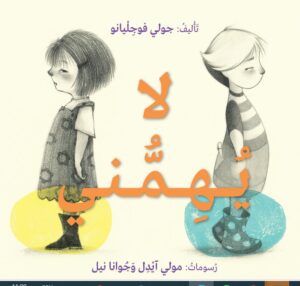 I Don’t Care
I Don’t Care 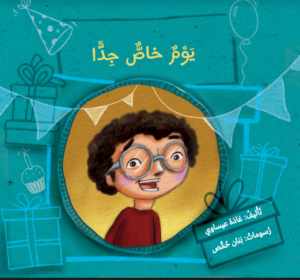 A Very Special Day
A Very Special Day 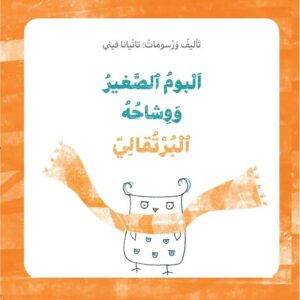 The Small Owl and his Orange Scarf
The Small Owl and his Orange Scarf 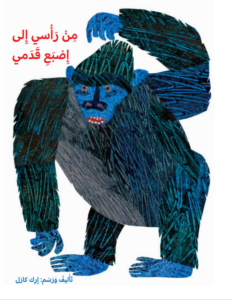 From My Head to My Toe
From My Head to My Toe 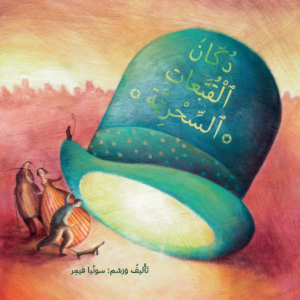 The magic hat shop
The magic hat shop 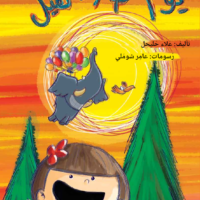 The Day the Elephant Flew
The Day the Elephant Flew  Sleep Tight Little Bear
Sleep Tight Little Bear 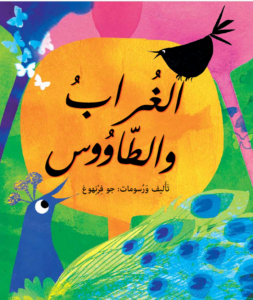 The Crow and the Peacock
The Crow and the Peacock 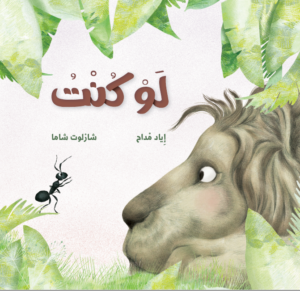 If I Were
If I Were 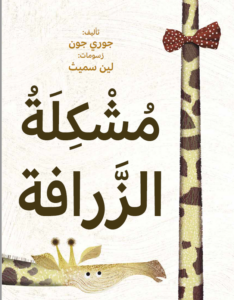 Giraffe Problems
Giraffe Problems 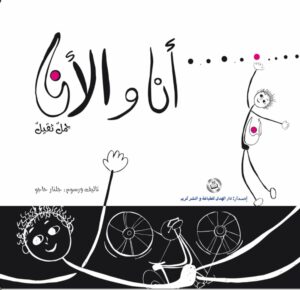 It’s Not Easy to Be Me
It’s Not Easy to Be Me 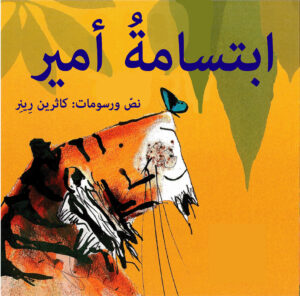 Augustus and His Smile
Augustus and His Smile 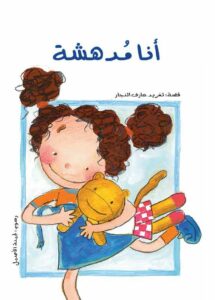 I’m Amazing
I’m Amazing 
